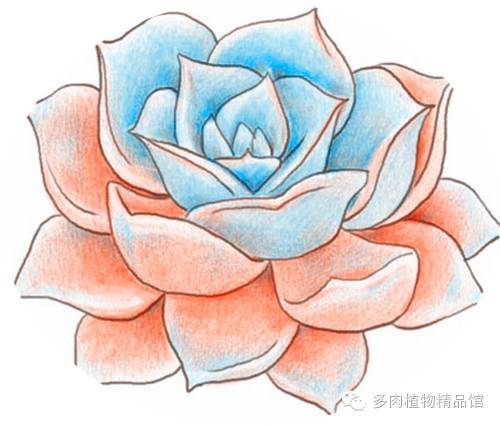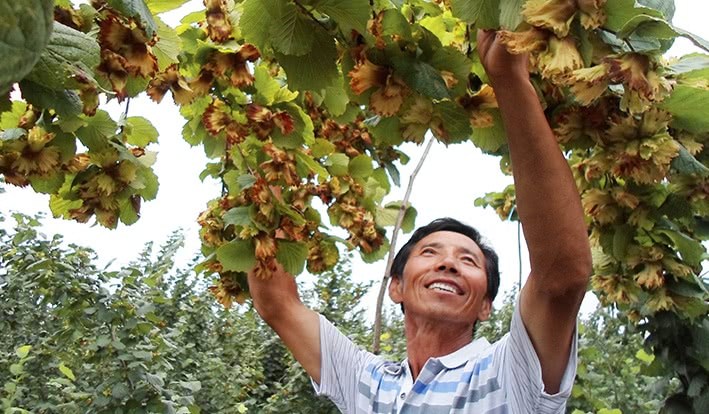Meaty. Have you figured out how to love it?

Zhengwen
Graphic: Network
The meaty cuties also have high control requirements for air humidity. Let's take a look together!
1. Requirements for air humidity in various seasons: It is very important to maintain a certain air humidity during the growing period. The effect of air humidity is evident when plants enter the growing season. The requirements for species native to tropical rainforests are even stricter. Some horticultural varieties with rich color changes are more colorful if they can maintain a considerable amount of air humidity. It can be said that basically most varieties need a certain humidity at this time. In the dormancy period, the control of air humidity should be very cautious, and the first is some varieties with higher meat quality in summer dormancy. For example, summer in Shanghai is typical of "hot and humid" weather. The highly fleshy fruits of the apricot family are rather perishable. How to spend summer in these old varieties of raw stone flowers and emperor jade is often the most headache problem for lovers. The same winter dormant varieties should also maintain a certain degree of dryness. This point should be taken seriously when the temperature is below 5 degrees Celsius. When the temperature continues to drop 0 degrees or lower. High humidity is often fatal and can kill overnight. However, most cities in the north are drier in winter. This "wet and cold" climate is more common in some southern cities in China.
2. Air humidity at seedling stage: Air humidity at seedling stage is particularly important, and its significance exceeds soil humidity. Because there will be a "squatting" process at the seedling stage. This control of moisture in the soil is intended to promote new roots, and maintaining a high air humidity prevents them from losing water due to squatting. Generally, the requirements for air humidity at seedling stage are higher than those at other growth stages, but the air humidity at this time is also the most difficult to master. Practice has proved that the smaller the seed, the smaller the seedling is relatively, and its resistance is poor, often unable to tolerate high humidity. Most of the typical varieties of Apricot family, Crassulaceae part of the varieties (the most prominent season Begonia) as the representative. After molding, this phenomenon will be greatly improved, and the problem of air humidity will not be so prominent.
3 Asexual reproduction on the air humidity requirements: the family commonly used asexual reproduction there are two kinds of cuttings, grafting. Cuttings: Plant organs should be kept dry for several days after they are separated from their mother. This time period depends on the variety. Less than 4, 5 days more than a month, to be completely dry wounds can be inserted in the matrix. At this time, high air humidity can be maintained. At this point, there are two main groups: those who advocate creating a dry environment, which can take root in a shorter time, but more expensive. Another school advocates creating a moist environment, which consumes less individual cuttings. But in the grafting aspect viewpoint is more unified, in just completes the grafting first two weeks must maintain dry, the ventilation, the excessively high humidity has the influence to the grafting survival rate.
4 For some root tuber varieties such as: tortoiseshell dragon, balsam pear, laughing bag, etc. Their surfaces tend to crack irregularly and are often rugged in their place of origin. But under artificial cultivation environment, especially from seedling domestication, their uneven surface is not obvious. But it's not just humidity; it's a full-blown problem. This is also the auxiliary basis used by some experienced enthusiasts to judge wild and artificial cultivation.
Articles are sorted out by the Fleshy Plant Boutique Museum. The copyright belongs to the original author. Some articles cannot be identified. They are marked as source networks. If there is infringement, please contact us immediately. We will deal with it in time.
- Prev

A rare mountain product in northeast China used to be used only to entertain distinguished guests. Now everyone can afford to eat 20 jin.
It is the ripe season for all kinds of nuts, and the streets are full of vendors selling sugar-fried chestnuts. Speaking of Chinese chestnut, everyone probably likes it! Sweet and soft waxy, with a layer of sugar outside, eat sweet in the mouth, so cold.
- Next

Do you know how much water you need to pour on your meat?
Zhengwen graphic: The network often has netizens to ask me how much water is appropriate, below I will introduce to you the judgment method! 1. Bamboo stick judgment method: bamboo stick (or toothpick) is inserted into the depth of two-thirds of the pot soil, and watering is required.
Related
- Wuhan Hospital Iron Tree Blooming Result Was Instantly Frightened by the Gardener Master
- Which variety of camellia is the most fragrant and best? Which one do you like best?
- What is the small blue coat, the breeding methods and matters needing attention of the succulent plant
- Dormancy time and maintenance management of succulent plants during dormancy
- Minas succulent how to raise, Minas succulent plant pictures
- What are the varieties of winter succulent plants
- How to raise succulent plants in twelve rolls? let's take a look at some experience of breeding twelve rolls.
- Attention should be paid to water control for succulent plants during dormant period (winter and summer)
- Watering experience of twelve rolls of succulent plants
- Techniques for fertilizing succulent plants. An article will let you know how to fertilize succulent plants.

